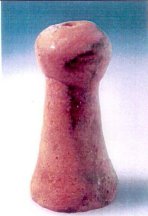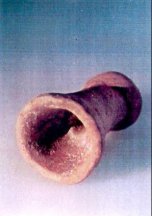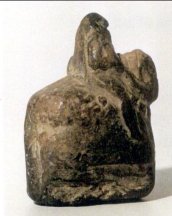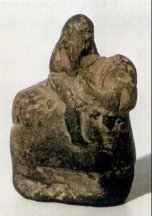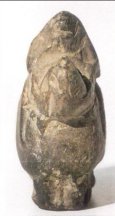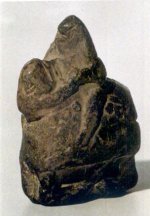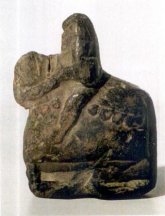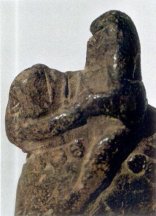The terracottas from Northern India
A lot of terracotta figures have been found in the North of India by archaeologists. The indologist Renate Syed has discussed the possibility that some of them would have been used as chessmen.
The city of Kanyâkubja lies in this region. Once known as Kanauj, it was the center of a powerful kingdom whose name is often mentionned in the first litterary allusions to the birth of Chess. Then, this hypothesis desserves consideration.
|
|
|
|
|
|
|
|
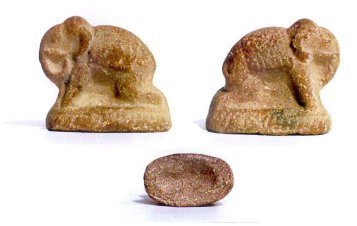
Elephant, around Kanauj. H: 4.6 cm
4th c. AD
|
|
Are those pieces chessmen? It is difficult to say. As Renate Syed writes "No conclusive evidence can be given for the use of the terracottas as chessmen; however a discussion about such a use should be be allowed".
Personally, I am not convinced. It seems to me that comparable terracottas, or other artefacts, exist from the same period from different regions. For example, I have seen Sogdian and Chinese similar terracottas in a Silk Road exhibition organised by the British Library in London (Spring 2004). So, I think that many places could disput India with the privilege of having old terracotta figurines, vaguely looking to chessmen.
The convincing proof would be to find a group of figures belonging to a same set. This has not happened so far.
Our knowledge of the ancient history of those regions is far from complete, so nothing is impossible. There is at least one example of find which really looks like a chessman:
This terracotta Knight is very similar in its design to pieces from the Afrasiab set, the eldest known Chess set. Moreover it is probably much older! This is very troubling indeed.
|
Knight,
Afghanistan or Northern India. H: 5 cm, early
6th c. AD. |












